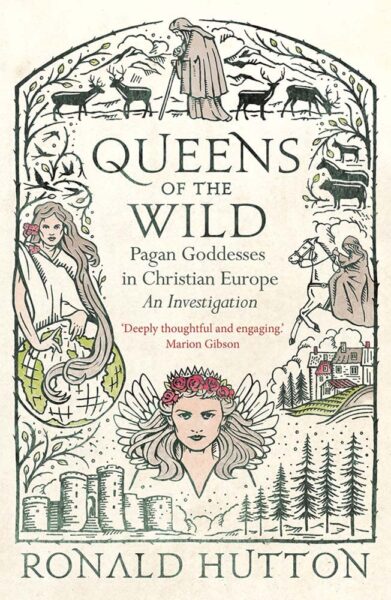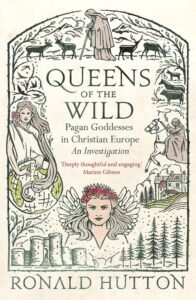Well, it ain’t necessarily so
Well, it ain’t necessarily so
Dey tells all you chillun
De debble’s a villun,
But it ain’t necessarily so!
So sang the character Sportin’ Life in George Gershwin’s award-winning 1935 opera Porgy and Bess. Sportin’ Life was, of course, in his own playful and opportunistic way seeking to disrupt the activities of a Christian evangelist group but the lyrics of the song reflect a much more broadly ranging skepticism about religion that had taken a firm foothold in the modern world at the time of the opera’s initial performance. Oh yes, the song was criticized by a number of Christian and Jewish religious leaders for its brazenness; however among the general public – particularly some of the more educated members thereof – the questioning of the absolute veracity of Christian scripture had begun well back in the previous century and was by the 1930’s well established as an accepted intellectual exercise.
While Essays and Reviews, edited by John William Parker and including such scholastically important works as Prof. Benjamin Jowett’s “On the Interpretation of Scripture” and Prof. Baden Powell’s “On the Study of the Evidences of Christianity,” was published in 1860 and cracked open the door to the introduction of serious skepticism in the study of religion in general and Christianity in particular, the ideas it contained really only reached an academic audience (as well as getting many of the authors who contributed brought up on serious ecclesiastical and academic charges). However as the study of mythology and folklore was then also growing among both scholars and the wider public, the stage was set for Sir James George Frazer’s The Golden Bough, published in 1890 and repeatedly revised afterward, to throw said door wide open with bold ideas about universality, syncretism, and other paradigm-shifting ideas about religion and how the various ones in the world – including Christianity – came to be. While Frazer’s ideas have now been largely dismissed by subsequent research, in 1921 when anthropologist and folklorist Margaret Murray published her book The Witch-Cult in Western Europe in which she proposed that a long clandestine nature-centered, female-led pre-Christian pagan religion based around a god (incorrectly interpreted in history as the devil) and goddess had existed in the background of Christianity’s rise and dominance over western Europe, Frazer’s ideas were at their height of popularity.
Frazer’s and Murray’s ideas, as well as those of others, about such a long hidden, ancient, and persisting nature-focused pagan religion is one of the key topics Dr. Ronald Hutton, M.A.(Cantab.), D.Phil.(Oxon.), F.R.Hist.S., F.S.A., FLSW, FBA, professor of history at the University of Bristol and one of the world foremost authorities on the history of early modern Britain, British folklore, and the history of contemporary Neo-paganism takes up in his new book Queens of the Wild; Pagan Goddesses in Christian Europe: An Investigation.

For many of us involved in the study of natural history, the fact that nature appears so strongly in the cultural and religious practices of various peoples around the world will not come as a particular surprise. Many of us, if not atheist or agnostic, through our work studying the cycles of the natural world, come to incorporate practices that are variously vaguely to significantly classifiable as Neo-pagan, with some professing openly to be Wiccan, modern Druid, or one of the many other contemporary spiritual paths that proclaim a connection to ancient pagan beliefs and practices, many of which are goddess-centered.
Taking up the dichotomy of “surviving paganism” versus “a pagan survival” – the former being the persistence of a fully developed set of pagan beliefs or practices that have been continually passed down through the centuries and the latter being pagan images and influences that have become embedded into other paradigms, often so deeply that they are now difficult to discern – and applying it to four central goddess themes – Mother Earth, the Fairy Queen, the Lady of the Night, and (the) Cailleach (and in an epilogue, the Green Man) – Prof. Hutton explores the folklore, myth, literature, and even architecture of Europe’s Christian period up to the present. While he thoroughly explored Murray’s ancient goddess/nature religion idea from The Witch-Cult in one of his previous books, The Witch; A History of Fear, from Ancient Times to the Present (a book I very highly recommend to al interested in the subject) and revisits his research and analysis originally presented in it extensively, particularly in the chapter on The Lady of the Night, in Queens of the Wild, he allows his mind to explore much further afield in search of potential influences and connections that may still be extent today.
A meticulous scholar, Prof. Hutton isn’t one to provide his readers with a single “Eureka!” moment, nor is he one to indulge his own mind or that of his readers with conclusions or pronouncements that cannot be proven to a level that will withstand the scrutiny of his fellow scholars. Indeed, there likely will be those who may find his style of an observation or hypothesis followed by a dozen or more examples from history, folklore, or literature that could be used to defend – as well as often others that could be used to assail – it a bit too dry for their tastes. But he is justified in being cautious; the subject of European pre-Christian paganism and its possible survival is one about which far more – shall we say wishful thinking? – is published that genuine scholarship. Indeed, from his books such as the aforementioned The Witch Prof. Hutton has been on the receiving end of not insignificant hostility from some who proclaim themselves to be followers of ancient surviving pagan witchcraft traditions that have been secretly preserved and remain unbroken to the present day.
What is so unfortunate about this last made point is that Prof. Hutton himself is not in the least opposed to what contemporary Neo-pagans practice, or how their use the systems they embrace to order and guide their respective lives. As he writes in the epilogue of Queens of the Wild, “The trouble only starts when those who embrace such beliefs back-project them upon the past and declare that they are revealing an ancient mystery, or an eternal and universal archetype which once underpinned a global – or even just continent-wide belief system, or else the truth about ancient or medieval religion.” Indeed, there is more than one widely followed religion or religious denomination active today that is far more readily popularly accepted than the various Neo-pagan ones that cannot prove a history much longer than one or two hundred years into the past yet proclaims antiquity for itself. But Prof. Hutton’s apparent purpose in this book, or in any of his previous ones I’ve read for that matter, is not to destroy any working system of belief; only to explore how some very old ideas may have come to influence more recent ones, and by discovery and disclosure of such, enrich the world we perceive thereby.
As one who has for years now read widely among Prof. Hutton’s books, both in the history of Neo-paganism as well as in the history of early modern England, I found Queens of the Wild to be a little repetitive of some of his earlier work, as I suspect others with similar familiarity with his works will as well (of course when one is one of the few working in the subject at such a deep level, reference back to one’s own work is admittedly difficult to avoid). However that is by no means to be understood as a dissuasion on my part from anyone – particularly those new to Prof. Hutton’s researches or the subject of the possible persistence of European paganism in modern European culture in general – taking up Queens of the Wild and reading it for themselves. Whether your interest is in the history of formal religious practice, folklore, or mythology, or in the influences motifs of divine nature (note – I did not write “a divine nature”) have had and continue to have upon modern thought, I very much recommend this new book as a entryway into a remarkably expansive garden of possibilities as to how even the most so-called “settled matters” may still be examined, and by which your interpretation of the world may be enlarged.
 Title: Queens of the Wild; Pagan Goddesses in Christian Europe: An Investigation
Title: Queens of the Wild; Pagan Goddesses in Christian Europe: An Investigation
Author: Ronald Hutton
Publisher: Yale University Press
Pages: 256 pp., with 24 color illus.
Format: Hardcover
ISBN: 9780300261011
Published: May 2022
In accordance with Federal Trade Commission 16 CFR Part 255, it is disclosed that the copy of the book read in order to produce this review was provided gratis to the reviewer by the publisher.
